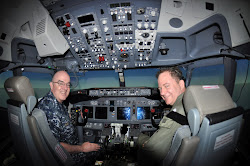Team,
In July 2010 I testified to Congress that institutional risk to the Navy was moderate trending to significant. High operational tempo as a result of growing operational demand was consuming the Fleet at a higher than planned rate. Although there was no doubt that we were deploying units that were operationally ready, overall readiness trends were in the wrong direction, particularly in our surface force, putting at risk our ability to sustain operational readiness into the future.
Over the past three years, the Fleet and maintenance community have taken significant actions to reverse negative surface force readiness health trends, as documented in this memo. What we have accomplished is a good news story for our Navy and reflects CNO's very strong and enduring commitment to Fleet Wholeness. These negative trends (underfunding of surface ship maintenance and our manpower accounts), however, were twenty years in the making and will take constant pressure and daily attention from us over time to fully resolve. So, while we can say we’ve arrested the decline in surface force readiness, we cannot declare victory. And in January we face the strong possibility of Sequestration, either as currently enacted in law or in some other form.
In this environment, deploying ships/submarines/aircraft/equipment that perform to design specification with Sailors confident in their ability to accomplish all assigned missions means we MUST hold the line on time-tested, combat proven standards that govern how we operate, maintain, inspect, certify and command our units. We have already proven that resourced-based outcomes are detrimental to Fleet Wholeness and mission success. Achieving and sustaining Fleet Wholeness will require that we all apply constant pressure - up and down the chain-of-command - to achieve outcome-based resourcing.
All the best, JCHjr
09 August 2012
Subscribe to:
Post Comments (Atom)

5 comments:
Admiral Harvey,
As my crew works daily to maintain standards and to work toward successful completion of a PMA and transition to the shakedown and basic phases, I feel compelled to highlight the value of the Maintenance and Readiness Assistance Teams highlighted in Encl (7) of your Surface Ship Material Readiness Improvements memo. This year, my crew has benefitted greatly from ERAT, CCAT and AMAT visits, as well as the WTD Team. Later this fall I look forward to leveraging VMAT as well. As I type, ERAT is on board for the 4th time since January, providing classroom training followed by space and material check walk-throughs, helping my Sailors to ensure we really know what right looks like. Clearly that is my responsiblity as CO. But given the reductions in pipeline training over the years and the challenges of "growing our own" and associated off-ship school and training requirements, any on board training facilitated by seasoned experts using my actual systems and spaces is absolutely invaluable. Thanks for supporting an initiative that I and many of my peers consider to be absolutely critical to our ability to maintain standards, self-sufficiency, and warfighting readiness. As you know, our Sailors are extremely smart and motivated, but in many cases they don't report on board with the requisite knowledge, skills and abilities for many of the reasons outlined in your memo. Thanks and v/r, CAPT Erik M. Ross, CO, USS BATAAN (LHD 5)
Admiral,
One important contributor to our improved surface ship material readiness is a number of "assistance teams" established by CNSL including Engineering, Corrosion Control, INSURV, Aux, Deck, etc. You provided details for these teams in your 27 JUN posting. These teams provide a wealth of experience and hands on training directly to our Sailors, on their ships, on their equipment, showing them what right looks like. This has provided my ship's in PHIBRON 6 a jump start where they needed it or advanced ship's force capabiltiies significantly in areas they were already proficient. In the comments following your 27 JUN posting, the discussion centered on whether the type of training provided by these teams should be done on the ship or before they arrive. I believe this is a false choice, we need both. The foundational training received during schools enroute the ship establishes a solid base upon which the assist teams can build. My squadron ships will continue to take advantage of these teams at every opportunity as we prepare for the challenges of the Training Cycle,INSURVs and deployment.
VR CAPT Tim Spratto
Commander, Amphibious Squadron Six
Admiral,
The programs work using older retired waterfront experts who were properly trained as they "grew up" with a proper Navy Training Command continum that did schoolhouse and hands-on training of equipment that youngsters would have on their ships.
CNSL has done a super job of getting those folks down to the waterfront and I would like to think his budget has been increased to cover those unfunded requirements and hopefully the funding comes from "Navy Training Command" who obviously can't do the job we need on the waterfront?
V/R
Retired 0-6
Admiral, Appears, by your candidness that you are ready to retire. As a retired civilian (veteran) defense worker we needed your comments and leadership a long time ago. BZ and Fair Winds. Thanks.
Sir,
as an outsider looking I would submit that your people will only truly believe you when the various 'shell-games' of people and kit stop and ship's are assessed on their actual readiness. I know SB and the USNI Blog may only represent the 'bad news stories' but I don't think your Lts and E5-7 believe you at the moment....
Yours aye,
Al
Post a Comment